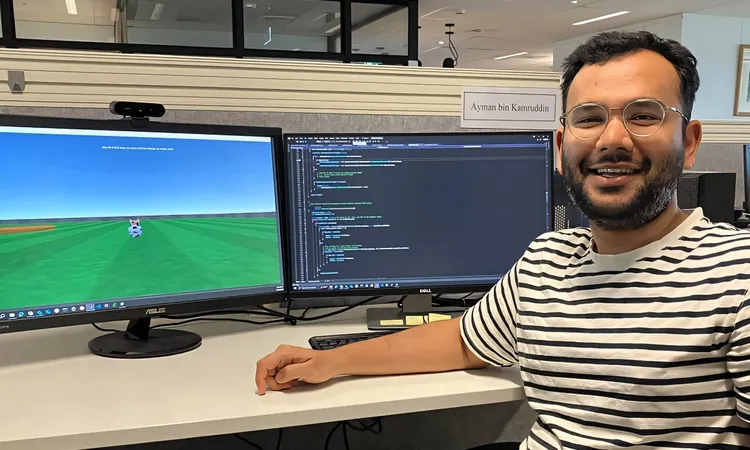
Unlocking the Future: How Virtual Cattle Herding Could Revolutionize Human-Robot Interaction
2024-10-31
Author: Ming
In a groundbreaking study, researchers have discovered that herding virtual cattle can significantly enhance our understanding of human-robot interaction. This innovative approach not only sheds light on how humans navigate their environment but also has profound implications for developing smarter robots in the future.
A collaborative research team from Macquarie University, Scuola Superiore Meridionale, and other prestigious institutions in Australia, Italy, and the UK conducted a unique experiment using a video game designed for herding tasks. Their focus was on Dynamical Perceptual-Motor Primitives (DPMPs)—a mathematical concept that mimics how we coordinate our movements in response to our surroundings.
DPMPs allow us to better understand our decision-making processes, especially in complex environments filled with both stationary and moving objects. The prior assumption was that our brains create detailed maps of our environment before determining how to navigate. However, recent studies suggest that humans operate differently: we instinctively move based on our objectives and seamlessly adjust to obstacles as they arise.
The researchers published their findings in Royal Society Open Science, detailing an experiment where participants were tasked with herding either a single cow or a group into a designated pen. By tracking players' decisions and movement patterns, the team fed this data into their DPMP model to evaluate its accuracy in simulating human behavior.
Lead researcher Ayman bin Kamruddin noted that the DPMP was remarkably effective, mimicking participant movements and predicting choices with about 80% accuracy. The study revealed specific patterns in decision-making: players tended to select the nearest cow initially, then chose subsequent targets based on proximity to previously selected cows. This insight is crucial not just for understanding human behavior but also for programming robots to behave more intelligently.
Herding games serve as an excellent research tool, simulating real-world scenarios where individuals control agents. Traditional approaches often utilized an aerial view, which may have distorted participants' decision-making processes. To address this, the research team designed a new game that offered a first-person perspective—aligning more closely with how humans actually perceive and interact with their environment.
Senior author Professor Michael Richardson emphasized the implications of this fresh perspective. "This study extends beyond crowd dynamics and target following; it’s the first to explore how a human can guide a virtual entity or robot effectively," he said. This advancement paves the way for the integration of smart decision-making strategies into robots and AIs, making them more responsive and capable of mimicking human behavior.
The potential applications of DPMPs are extensive. They could play a pivotal role in crowd management, evacuation planning, virtual reality training for firefighters, and search-and-rescue operations. By using DPMPs to anticipate human movement and reactions, researchers can create more effective and intelligent systems that enhance safety and efficiency in critical situations.
This study marks an exciting milestone in the interplay between human cognition and robotic design, hinting that the robots of tomorrow may just learn a thing or two from herding virtual cows. Stay tuned for more revolutionary insights that blend technology with human psychology, as we move closer to a world where human-robot interaction is seamless and intuitive!



 Brasil (PT)
Brasil (PT)
 Canada (EN)
Canada (EN)
 Chile (ES)
Chile (ES)
 España (ES)
España (ES)
 France (FR)
France (FR)
 Hong Kong (EN)
Hong Kong (EN)
 Italia (IT)
Italia (IT)
 日本 (JA)
日本 (JA)
 Magyarország (HU)
Magyarország (HU)
 Norge (NO)
Norge (NO)
 Polska (PL)
Polska (PL)
 Schweiz (DE)
Schweiz (DE)
 Singapore (EN)
Singapore (EN)
 Sverige (SV)
Sverige (SV)
 Suomi (FI)
Suomi (FI)
 Türkiye (TR)
Türkiye (TR)